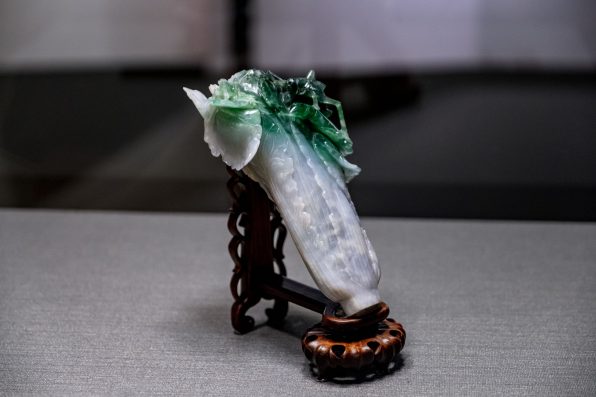The Jade Cabbage Is A Treasured Must-See Artifact In Taiwan, Perfectly Depicting The Green Leaves And White Stalks Of A Bok Choy

If you want to explore the wonders of Taiwan, here is a popular, must-see attraction you need to add to your bucket list. The jade cabbage is the most revered treasure in the country.
It is housed in the National Palace Museum in Taipei, where it has stayed for years, aside from a brief stint in Japan in 2014. Just two weeks after arriving in Japan, it was shipped back to Taiwan.
The tiny artifact is kept in a glass case in its own room near the museum’s exit. It is carved from a single piece of green and white jade, perfectly depicting the green leaves and white stalks of a bok choy, a vegetable that is very common in Chinese cooking.
In addition, a locust and a type of cricket known as a katydid can be seen, carved in a way that makes them appear to be perched on the foliage.
The cabbage was originally from the Eternal Harmony Palace in Beijing’s Forbidden City. It is believed to have belonged to Jin Fei, the consort of the Guangxu Emperor who ruled during the Qing dynasty.
Together, the locust, katydid, and cabbage represented purity and fertility, which made it an ideal gift for the new consort.
During the Chinese Civil War, the jade cabbage, along with other precious artifacts, was taken to Taiwan by Chiang Kai-Shek in 1949.
Even among ancient bronze ornaments, excellent paintings, and elegant furniture pieces, the jade cabbage remained one of Taiwan’s most prized possessions.
The carved cabbage is quite small, at a size of 7.4 by 3.5 inches. It was made sometime in the 19th century, and the identity of the person who created it is still unknown.

Klanarong Chitmung – stock.adobe.com – illustrative purposes only
The stone from which the vegetable was carved had contained many cracks and flaws. So, the fact that the anonymous artist was able to work with the stone and produce such a gorgeous, complex object is highly impressive.
The online gift shop at the museum sells glass replicas of the cabbage that visitors can purchase as keepsakes. Some of them cost hundreds of dollars.
Other cabbage-related souvenirs include magnets, rulers, bottle stoppers, wind chimes, and fried egg-shapers. The museum’s restaurant even offers a dish that resembles the cabbage, although the insects are replaced with tiny shrimp.
Sign up for Chip Chick’s newsletter and get stories like this delivered to your inbox.
More About:Travel





